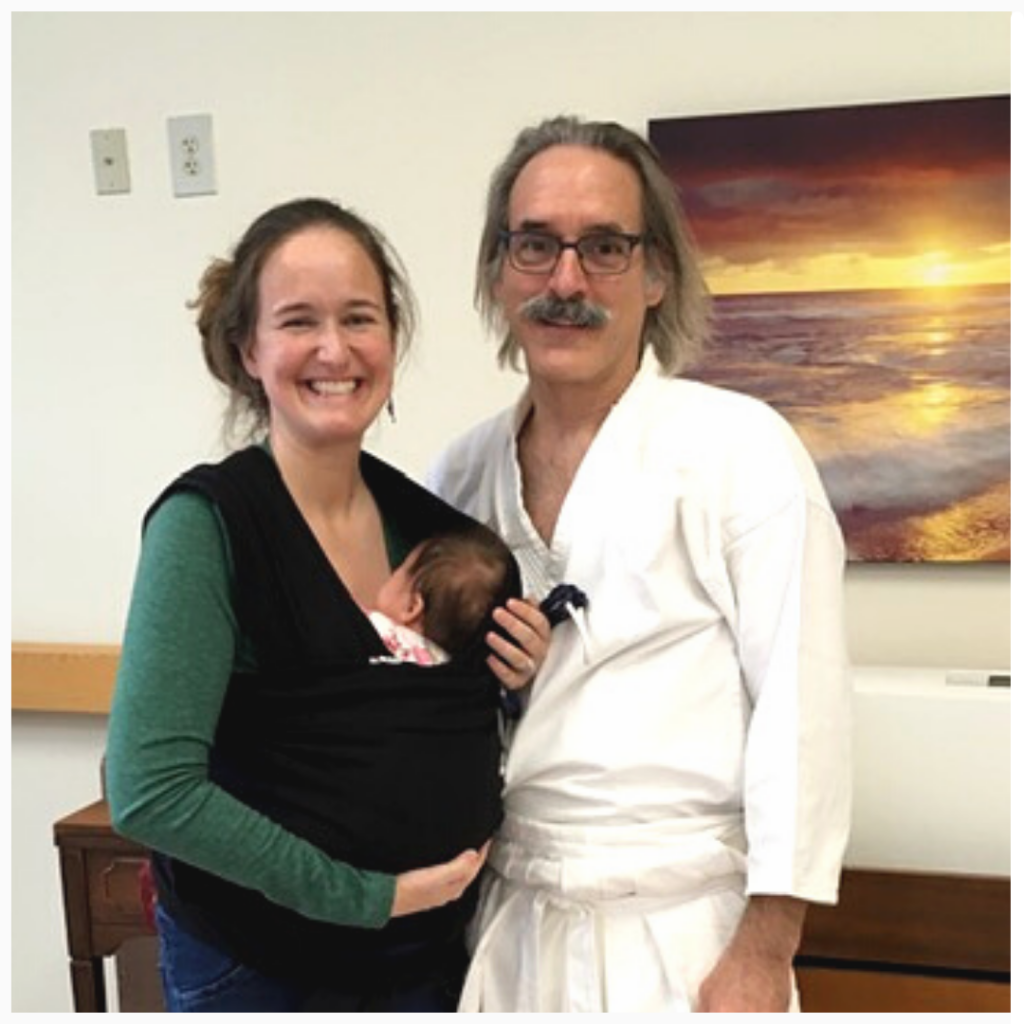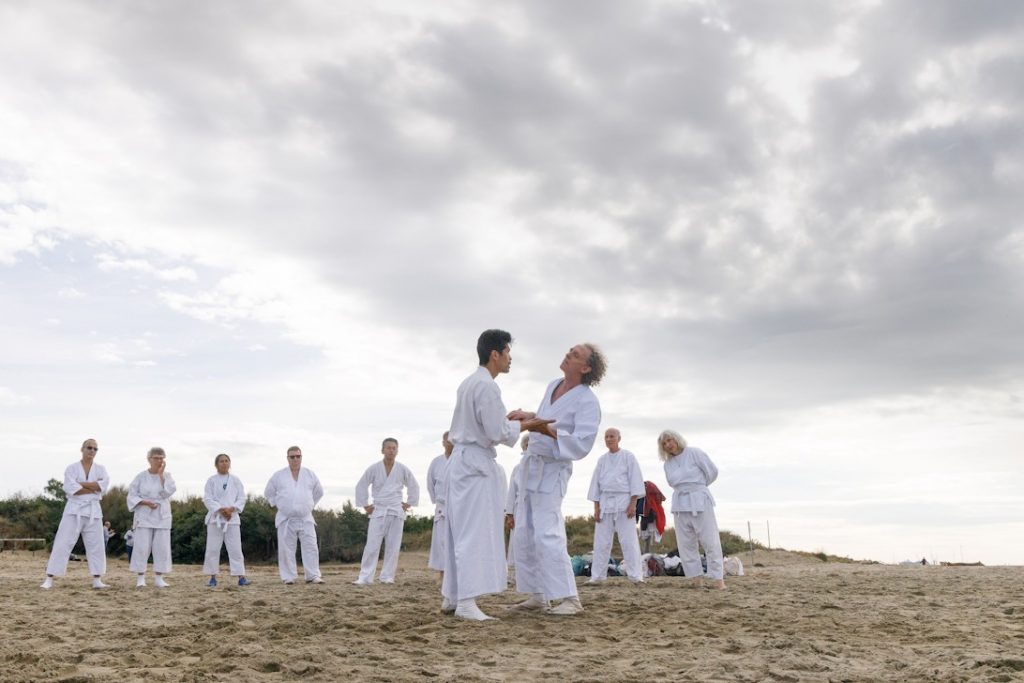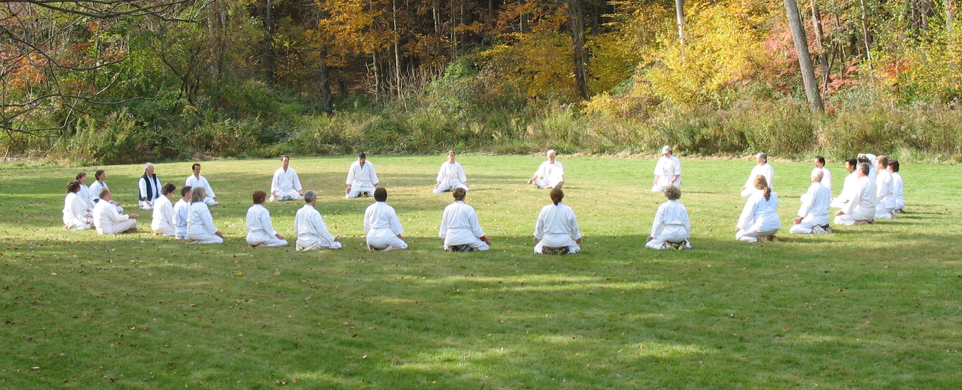by Lee Ordeman
When the idea of dissolving the International Shintaido NPO was first proposed, I was strongly against it. For 13 years as a board member of ISC and then IS, I worked hard to establish a legally incorporated organization. Further, I spent a year on another committee that wrote the bylaws for IS. After all this, I couldn’t imagine giving up on an ideal and such a long-held goal. But then I considered the situation from a longer and wider historical perspective.

Instead of seeing this moment as a setback, I began to see it as a stage of transition away from an old model, the iemoto system of leadership, and toward something more appropriate. The iemoto system is the way traditional Japanese cultural schools, including martial arts schools, handled succession of leadership. When a master died or ended his or her career, a new individual would be chosen to carry on and further the legacy. This system may have worked well in feudal times, but in modern times, it has not shown a lot of success – at least not for martial artists. Think of aikido or the various schools of karate. Succession at these schools has not gone smoothly. When a master has died or given up control, the school has divided and the tradition weakened. As far as I can tell, no organization like ours has succeeded in making this transition without splitting apart and weakening the stream of knowledge.

We have been traveling this path of transition away from the old system for some years now, and we are discovering that such change doesn’t come as an event but as a process, and a longer and harder process than we had imagined. One main cause of our difficulty is that within Shintaido we maintain elements of pre-modern Japanese culture. Besides some superficial cultural traces like Japanese clothing and Japanese vocabulary, we have some important, deep and influential traditions, like sempai/kohai relationships and the students’ deep devotion and loyalty to a main teacher, whom we burden with great responsibilities and expectations, even beyond the walls of the dojo.
These ancient Japanese cultural elements rely on conditions that don’t normally exist in Western student-teacher relationships. [They don’t fit comfortably in modern culture anywhere, for that matter, arguably not even in Japan.] Over the last six years or so, we have been trying to knit these traditional Japanese elements into a way of self-organizing that embraces democratic principles. Not surprisingly, we are finding that hard to do: For some things we expect top-down leadership, for some we expect grassroots initiative, for some we expect the doshu to delicately indicate which way to go. It is confusing, sometimes frustrating, and at times conflicting for sempai and kohai alike.
It can be hard going, but for an “avant garde” martial art, that was founded in principles and ideals both Eastern and Western, in which the individual is valued as much as the group, we can neither return to a feudal approach to leadership, nor can we lock down another way of organizing ourselves that doesn’t work or feel relevant to so many in the group. Instead, we can respond to the new conditions and adapt. Just as our “new” martial art evolves with the demands of the times, so can its approach to organization and leadership.
It is unlikely that we will figure all this out on the first try, and maybe not on the second or third. We will have to revise and revise as we go. Like Jim Sterling said when ITEC and the Board met in March to discuss the way forward, we will wipe away the mandala and make a new one.

Without an individual patriarchal/matriarchal leader to tell us what to do, how we make decisions and organize will continue to be a process. The process will require us to voice our points of view to one another. The process will show us our differences, and it is valuable and important that it do so.
We can embrace these moments of opposing views as opportunities to practice our art. Shintaido shows us how to deal with differences and deal with the discomfort, regardless of the structure by which we do it. Shintaido life is not a life without differences with others. A life in Shintaido is rather a life equipped to deal with the differences, even conflicts, and to turn them into opportunities for making things better for everyone. And leading up to this moment, as we have struggled and experienced occasional disagreement, this process of change has brought us closer together, and we are now communicating better than ever.
Though I have come to believe that the IS NPO based in France should be dissolved to make way for the next phase or our organization, I don’t regret the work to create and operate IS as a waste of effort. The organization served a very good purpose: First, it taught us many things we are now finding useful as we refine how to organize ourselves in the future. Second, it held us together all this time. It did so especially through a much greater crisis in 2015 and 2016, when we were actually splitting apart, as we broke with the iemoto system and then struggled to hold together what was left. It was an emotional and divisive time; people were angry with each other and the future of Shintaido itself seemed at risk. But in this crisis we found opportunity to overcome differences. Finding agreement to create a new organization and attempting to make it support a unified curriculum and exam system brought us closer together than we were before.
I believe the next phase will bring us even closer together as we continue to make Shintaido a vital, strong and internationally unified stream of learning that brings joy and light to people well into the future.
See you in keiko and at exams!
Lee Ordeman served on the boards of the ISC and IS from 2008 until this spring. He also helped write the IS bylaws and code of ethics. He started practicing Shintaido 34 years ago in Cambridge, Massachusetts, studying with Michael Thompson and David Franklin. In 1990 he moved to Tokyo, where he became an instructor and studied with Hiroyuki Aoki, Mitsuru Okada, and H.F. Ito during his regular visits to Japan. Lee moved back to the U.S. in 2000 and since then has led classes in Baltimore and Washington, DC. He is also a regular guest instructor at El Haddawi, a school of body movement in Bavaria, Germany.



